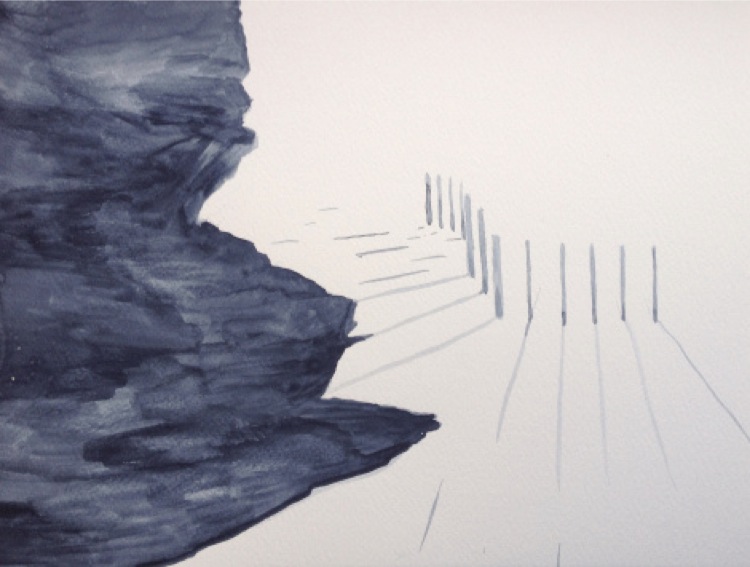18 / 06 / 2015
PERFORMANCE
The Stranger / Stranac - 27.-28.06.2015 @ Zagreb Dance Center


The Stranger
Inspired by the novel "The Stranger" by Albert Camus Departing from the problem of the absence of (com)passion and expected emotional reactions, the STRANGER project, using Camus’s antihero Meursault, provides a view of the social and systemic hypocrisies that are hidden behind relationships based on transparency. This stage reading of THE STRANGER focuses on three dominant images borrowed from the novel: the situation of confession, prison, and the moment of the murder itself as the point where all of the novel’s forces accumulate. Shedding light on a narrative and discourse as an attempt to explain what happened generates the level of confession, the law of transparency. Constructing a transparent choreographic score examines, in terms of mise-en-scène, the performative potency of the situations and atmospheres inscribed in the novel. Finally, with light literally shed upon it, the murder, as the central point in the narrative, is presented as a tableau of a continual threat and a stage image that constantly remains incomplete in the spectator’s eye, in its poetic character, always incomplete in waiting for a visual release, unclear because too clear. Goran Sergej Pristaš - directing Goran Ferčec - dramaturgy and text Nikolina Pristaš - choreography and performance Zrinka Užbinec - choreography and performance Ana Kreitmeyer - choreography and performance Petar Milat - textual contribution and performance Alen Sinkauz - music and performance Nenad Sinkauz - music and performance Siniša Ilić - drawings and stage design Silvio Vujičić - costume design Alan Vukelić - light design Jasmin Dasović - sound design Iva Dežmar - mask Lovro Rumiha - production Special thanks - Maria Tsitroudi, Anders Paulin They always came for one at dawn; that much I knew. So, really, all my nights were spent in waiting for that dawn. I have never liked being taken by surprise. When something happens to me I want to be ready for it. That’s why I got into the habit of sleeping off and on in the daytime and watching through the night for the first hint of daybreak in the dark dome above. The worst period of the night was that vague hour when, I knew, they usually come; once it was after midnight I waited, listening intently. Never before had my ears perceived so many noises, such tiny sounds. Still, I must say I was lucky in one respect; never during any of those periods did I hear footsteps. Mother used to say that however miserable one is, there’s always something to be thankful for. And each morning, when the sky brightened and light began to flood my cell, I agreed with her. Because I might just as well have heard footsteps, and felt my heart shattered into bits. Even though the faintest rustle sent me hurrying to the door and, pressing an ear to the rough, cold wood, I listened so intently that I could hear my breathing, quick and hoarse like a dog’s panting—even so there was an end; my heart hadn’t split, and I knew I had another twenty-four hours’ respite. Albert Camus: Stranger In 1951 the abstract painter Willem de Kooning commented on the radical visuality unleashed by the atomic bomb. The advent of atomic light signaled, for de Kooning, the absolute transformation of visual representation: “Today, some people think that the light of the atom bomb will change the concept of painting once and for all. The eyes that actually saw the light melted out of sheer ecstasy. For one instant, everybody was the same color. It made angels out of everybody.” An atomic visuality, forged in the spectacular visuality of the atomic or A-bomb, an A-visuality. De Kooning's reflection on the atomic detonation and its effect on visual representation is marked by religious excitement and confusion. The sadistic metaphysics of his account, the cruel suggestion of redemptive ecstasy in the monochromatic annihilation, conveys de Kooning's uneasiness in front of the atomic spectacle. His language charts the limits of figuration before the visual event that may have changed "the concept of painting once and for all." "The eyes that actually saw the light," those who witnessed and understood (or were converted), also lost their vision; in the sacrificial logic of de Kooning's passage, the witnesses exchanged their eyesight for a sublime visuality: the eyes of those witnesses "who saw the light melted out of sheer ecstasy." Ecstatic, outside, blinded. The last form of light, perhaps, that anyone needed to see. The last light of history, according to de Kooning, or the light at the end of history. (...) The atomic blast that melted the eyes of angels brought forth a spectacle of invisibility, a scene that vanishes at the instant of its appearance only to linger forever in the visual world as an irreducible trace of avisuality. Akira Mizuta Lippit: Atomic Light Excerpts from the following texts were used in the performance: Albert Camus: The Stranger Albert Camus: Summer in Algiers Mahmoud Darwish: Identity Card Books we refer to in the performance: Akira Mizuta Lippit: Atomic Light (Shadow Optics). Georges Didi-Huberman: Survivance des lucioles Alexander Garcia-Düttmann: Visconti: Insights into Flesh and Blood The film Juke box (1966) by Ante Verzotti is screened during the performance. Premiere: June 27th and 28th 2015 @ Zagreb Dance Center, Ilica 10, Zagreb, Croatia Project supported by: Zagreb City Council for Education, Culture and Sport; Ministry of Culture of Republic of Croatia, Zagreb Dance Centre. Project is a coproduced by Perforations Festival (Domino)-------------------------------------
Stranac
Predstava je inspirirana romanom “Stranac”, Alberta Camusa Polazeći od problema izostanka (su)osjećanja i očekivane emocionalne reakcije, projekt STRANAC preko Camusovog antijunaka Meursaulta sagledava socijalna i sistemska licemjerja sakrivena iza odnosa zasnovanih na transparentnosti. Ovo scensko čitanje STRANCA koncentrira se na tri dominantne slike preuzete iz romana; situacije ispovijesti, zatvora i trenutka samog ubojstva kao točke u koju se akumuliraju sve silnice romana. Rasvjetljavanjem narativa i diskursa kao pokušaja objašnjenja onoga što se dogodilo generira se ispovijesna razina, zakon prozirnosti. Gradnjom transparentne koreografske partiture mizanscenski se propituje izvedbena potentnost situacija i atmosfera upisanih u roman. Konačno, doslovno ispostavljeno rasvjetljavanju, ubojstvo kao središnje mjesto narativa izloženo je kao tableau neprestane prijetnje i scenska slika koja u gledateljevu oku uvijek ostaje nepotpuna u svojoj poetičnosti, uvijek nedovršena u iščekivanju vizualnog opuštanja, nejasna uslijed prevelike vidljivosti. Goran Sergej Pristaš - režija Goran Ferčec - dramaturgija i tekst Nikolina Pristaš - koreografija i izvedba Zrinka Užbinec - koreografija i izvedba Ana Kreitmeyer - koreografija i izvedba Petar Milat - tekstualni prilozi i izvedba Alen Sinkauz - glazba i izvedba Nenad Sinkauz - glazba i izvedba Siniša Ilić - crteži i scena Silvio Vujičić - kostimografija Alan Vukelić - oblikovanje svjetla Jasmin Dasović - oblikovanje zvuka Iva Dežmar - maska Lovro Rumiha - produkcija Posebna zahvala - Maria Tsitroudi, Anders Paulin Znao sam da dolaze u svitanje. Ukratko, provodio sam noći u iščekivanju toga svitanja. Nikad nisam volio iznenađenja. Kad treba da mi se što dogodi, najviše volim biti spreman. Zbog toga sam naposljetku samo malo spavao obdan, a za dugih noći strpljivo sam čekao da se javi svjetlo na oknu neba. Najteže je bilo u onaj sumorni sat kad sam znao da obično obavljaju svoj posao. Čim bi prošla ponoć, čekao sam i vrebao. Nikad mi uho nije razabiralo toliko šumova, lučilo toliko slabašnih zvukova. Mogu, uostalom, reći da sam u neku ruku imao i sreću za sve to vrijeme, jer nikad nisam čuo korake. Mama je često govorila da čovjek nije nikad posve nesretan. O tome sam se osvjedočio u zatvoru, kad se nebo žarilo i danje se svjetlo uvlačilo u moju ćeliju, jer sam lako mogao začuti korake, a tada bi mi srce možda prepuklo. Čak i kad bi me najmanji sušanj privukao vratima, čak i kad bih prislonio uho na drvo i izbezumljeno čekao sve dok ne bih začuo svoj dah, prestravljen što je toliko potmuo i sličan psećem hroptanju, srce mi ipak ne bi prepuklo i dobio bih još dvadeset četiri sata života. Albert Camus: Stranac Godine 1951. apstraktni slikar Willem de Kooning komentirao je radikalnu vizualnost oslobođenu atomskom bombom. Pojava atomske svjetlosti najavljuje, za de Kooninga, apsolutnu promjenu u vizualnom prikazivanju: “Danas, pojedinci misle da će svjetlo atomske bombe zauvijek promijeniti koncept slike. Oči koje su zapravo vidjele svjetlo, rastopile su se u čistoj ekstazi. Na tren, svi su bili iste boje. Svi su se učinili anđelima”. Atomska vizualnost, iskovala je u spektakularnoj vizualnosti atomske ili A-bombe, A-vizualnost. De Kooningovo razmišljanje o atomskoj detonaciji i njenom utjecaju na vizualno prikazivanje obilježeno je religioznim uzbuđenjem i zbunjenošću. Sadistička metafizika njegove analize, okrutni prijedlog otkupljivačke ekstaze monokromatskog uništenja, otkriva de Kooningovu nelagodu pred prizorom atomskog spektakla. Njegov jezik upisuje granice figurativnosti prije vizualnog događaja koji je možda promijenio "koncept slikarstva jednom i za svagda." "Oči koje su zapravo vidjele svjetlo", oni koji su svjedočili i shvatili (ili bili preobraćeni), izgubili su i vid; u žrtvenoj logici de Kooningovog odlomka, svjedoci su zamijenili vid za uzvišenu vizualnost: oči onih svjedoka "koji su vidjeli svjetlo rastopile su u čistoj ekstazi”. Ekstatični, na otvorenom, slijepi. Možda posljednji oblik svjetlosti, koji bi trebalo vidjeti. Posljednje svjetlo povijesti, prema de Kooningu ili svjetlo na kraju povijesti. (...) "Atomska eksplozija koja je rastopila oči anđela izvela je spektakl nevidljivosti, prizora koji nestaje u trenutku njegova pojavljivanja samo da bi se zauvijek zadržao u vizualnom svijetu kao nepromjenjiv trag avizualnosti. Akira Mizuta Lippit: Atomic Light U predstavi su korišteni fragmenti tekstova: Albert Camus: Stranac, preveo Zlatko Crnković. Albert Camus: Ljeto u Alžiru, prevela Višnja Machiedo. Mahmud Derviš : Lična karta, preveo Mirza Sarajkić Knige koje su nas inspirirale: Akira Mizuta Lippit: Atomic Light (Shadow Optics). Georges Didi-Huberman: Poput krijesnica, prevela Sana Perić. Alexander Garcia-Düttmann: Visconti – uvidi u krvi i mesu, preveo Dalibor Davidović U predstavi se koristi film Ante Verzottija Juke box, 1966. Premijera: 27. i 28. lipnja 2015. @ Zagrebački plesni centar, Ilica 10, Zagreb Predstava je pripremana u prostoru - Mjesna uprava “Stjepan Radić” i Centar za kulturu Novi Zagreb. Projekt je podržan od: Gradskog ureda za obrazovanje, kulturu i sport Grada Zagreba, Ministarstva kulture RH i Zagrebačkog plesnog centra Projekt je ostvaren u koprodukciji s Festivalom Perforacije udruge Domino18 / 06 / 2015
PERFORMANCE
The Stranger / Stranac - 27.-28.06.2015 @ Zagreb Dance Center



